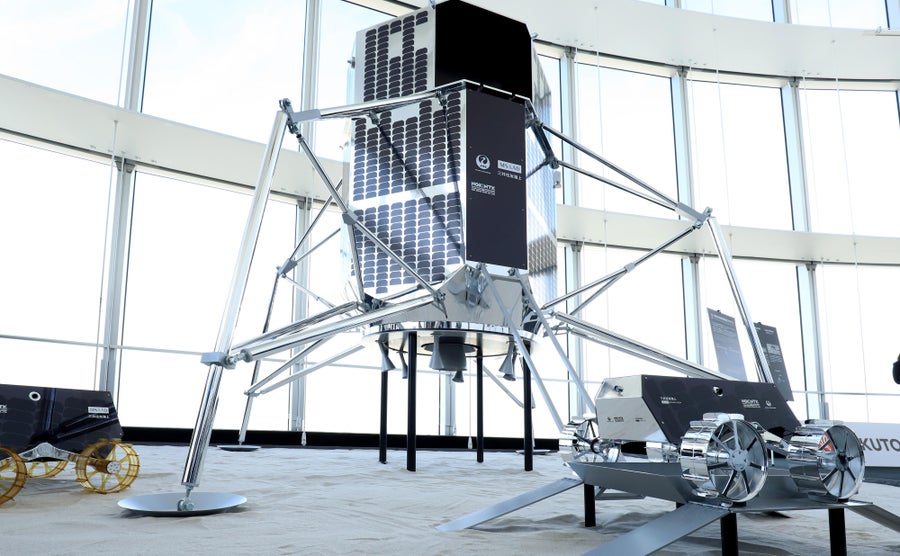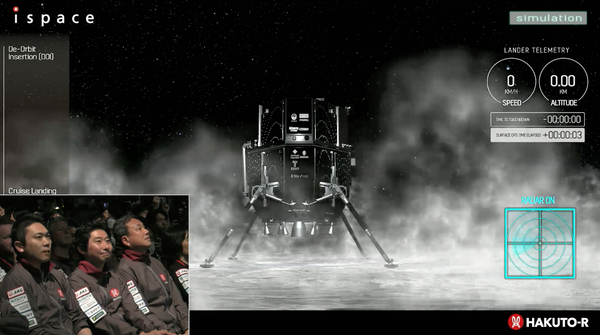A Japanese company’s attempt to execute the first commercial landing on the moon has ended with a dramatic silence, with mission controllers unable to establish communications after the scheduled landing.
The HAKUTO-R mission was designed by the Japanese company ispace and launched atop a SpaceX Falcon 9 rocket in December 2022. With the failed landing on April 25, HAKUTO-R joins the ranks of missions such as Israel’s Beresheet and India’s Vikram landers, which crashed into the moon during unsuccessful landing attempts in 2019.
“We have to assume that we could not complete the landing on the lunar surface,” said ispace CEO Takeshi Hakamada during a live broadcast of the landing attempt. “Our engineers will continue to investigate the situation.”
On supporting science journalism
If you're enjoying this article, consider supporting our award-winning journalism by subscribing. By purchasing a subscription you are helping to ensure the future of impactful stories about the discoveries and ideas shaping our world today.
It’s not clear yet what went wrong during the automated landing process. The lander, also known as Mission 1, or M1, was meant to touch down in Atlas Crater in the Mare Frigoris region on the northern hemisphere of the moon’s near side about an hour after an initial deorbit maneuver. Hakamada noted that the team maintained communications with HAKUTO-R until the very final moments of the landing process and successfully acquired flight data that will inform future missions.
“We are very proud of the fact that we have already achieved many things during this Mission 1,” Hakamada said. “We will keep going.”

The HAKUTO-R lunar lander, built by the Tokyo-based firm ispace, as displayed during a promotional event in 2019. Credit: Yoshio Tsunoda/AFLO/Alamy Stock Photo
Those future missions aren’t hypothetical: ispace intends to launch two additional missions—both of which will carry payloads from NASA among other customers—in 2024 and 2025, respectively, and provided updates about overall mission progress during the M1 landing event.
“I’m really happy to announce that as of last week we started building the M2 flight model lander,” said Scott Moon, an ispace engineer, during the broadcast. “We are on our way to the M2 launch.”
Prime among HAKUTO-R’s payloads was a rover built by the United Arab Emirates (U.A.E.). Called Rashid, the rover was designed to operate for two weeks on the moon’s surface to test a host of exploration technologies. The devices included high-resolution and microscopic cameras, a thermal imager and a Langmuir probe, which researchers would have used to study how charged particles affect lunar dust. The rover would have been the U.A.E.’s second spacecraft beyond Earth orbit: the nation also operates the Hope Mars orbiter.
HAKUTO-R also carried a second lunar explorer: a transformable robot built by the Japan Aerospace Exploration Agency. The robot would have rolled across the lunar surface and gathered images and data to inform Japan’s planned pressurized rover for future astronauts.
Other payloads onboard the lander included a solid-state battery, an artificial-intelligence-powered flight computer and a 360-degree camera. The lander was also taking part in a NASA program to claim and transfer ownership of lunar regolith.
Coming into the landing attempt, ispace knew that it faced steep odds: the moon has claimed plenty of ambitious spacecraft in its time. Still, the failure comes as a blow to Japan, as well as to those who advocate for private exploration of the moon.
“History can be made only by those who challenge it, and challenges would not be possible without taking a risk,” said Yuichi Tsuda, a planetary scientist who led the nation’s Hayabusa2 mission, which delivered asteroid samples to Earth in 2020, during the live broadcast before the HAKUTO-R landing. “Risk can be taken only by those who dream. So ispace team, you are all excellent dreamers.”
